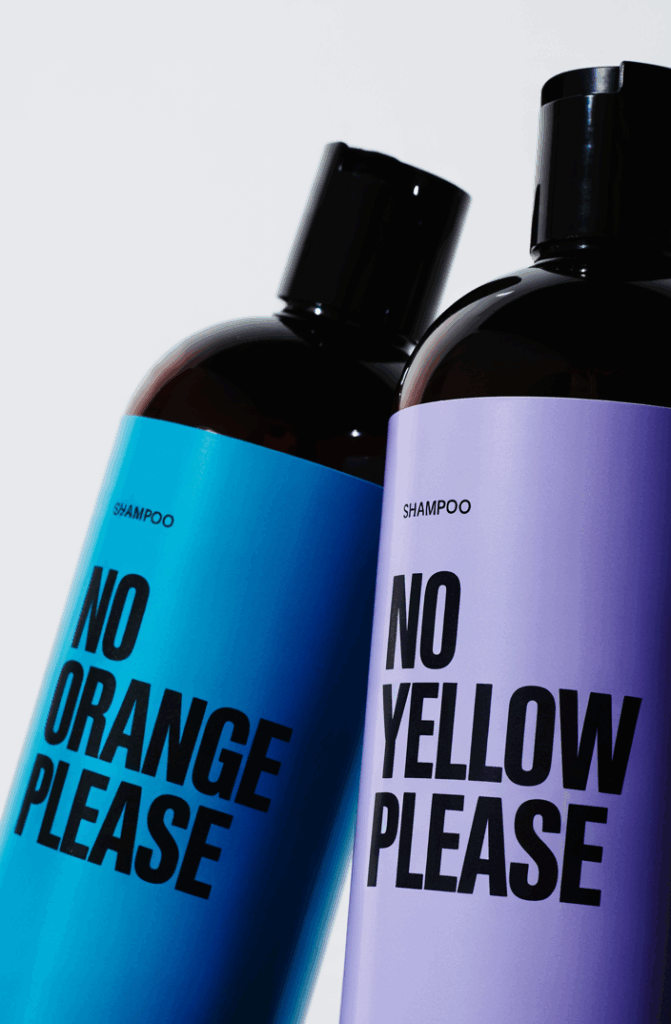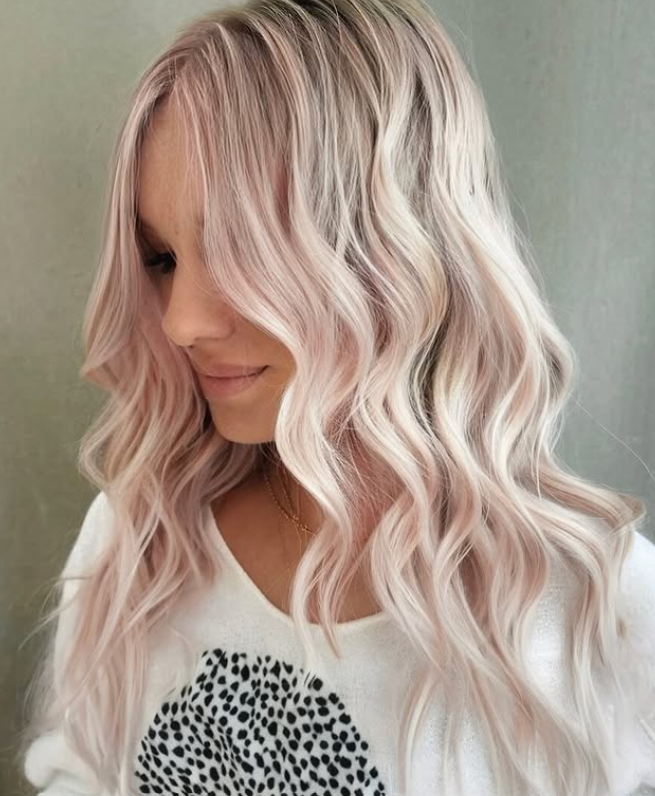Purple vs Blue Shampoo
The battle between purple and blue shampoo has left many of us standing in the haircare aisle, utterly bewildered. With 73% of colour-treated hair experiencing unwanted brassiness within just four weeks of salon visits, choosing the right toning shampoo isn't just about preference, it's about preserving your investment and keeping your colour looking salon-fresh.

The fundamental difference between these two colour-correcting champions lies in basic colour theory: purple shampoo neutralises yellow tones, whilst blue shampoo tackles orange and red undertones. Think back to your school art lessons—colours sitting opposite each other on the colour wheel cancel each other out, and this principle is exactly what makes these shampoos so effective.
Understanding Purple Shampoo
Purple shampoo deposits violet pigments onto your hair's surface to counteract yellow tones that naturally develop in lightened hair. It's the go-to solution for blondes, silver-haired beauties, and anyone with highlighted locks who wants to maintain that cool, ashy finish.
Who should use purple shampoo:
- Natural or dyed blondes experiencing yellowing
- Those with silver, grey, or platinum hair
- Brunettes with blonde highlights or balayage
- Anyone with hair lightened to level 8 or higher
The key to success with purple shampoo is moderation. Cool-toned blondes can typically use it weekly, whilst those with warmer blonde tones should limit usage to once or twice monthly to avoid over-toning.
The Power of Blue Shampoo
Blue shampoo contains cobalt or indigo-toned pigments specifically formulated to neutralise orange, copper, and red tones that appear in darker hair colours.

When brunette hair is lightened or colour-treated, it reveals underlying orange pigments, and that's where blue shampoo becomes your secret weapon.
Blue shampoo works best for:
- Natural brunettes with unwanted warmth
- Dark hair with highlights, ombré, or balayage
- Anyone transitioning from dark to light colours
- Those seeking cooler, ashier brunette tones
Blue shampoo tends to be more potent than its purple counterpart because orange tones are notoriously stubborn and require stronger pigments to neutralise effectively.
Choosing Your Champion
The decision between purple and blue shampoo isn't arbitrary—it's determined by your hair colour and the specific undertones you're battling. Here's how to make the right choice:
For Blondes and Light Hair: Purple shampoo is your best friend. Whether you're dealing with natural yellowing from sun exposure or brassiness from heat styling, purple pigments will restore that coveted cool tone.
For Brunettes and Dark Hair: Blue shampoo is your solution. If you're seeing orange or red undertones creeping into your brown hair, blue pigments will neutralise these warm hues and give you that sophisticated, cool brunette finish.
For Multi-Tonal Hair: Some hair colours benefit from both approaches. Brunettes with blonde highlights might alternate between the two or even mix a small amount of blue shampoo with purple shampoo to address multiple undertones simultaneously.
Professional Application Tips
Using toning shampoos correctly is crucial for achieving salon-quality results at home. Always wear gloves to prevent staining your hands, and apply the product to wet hair, working it through evenly. Leave purple shampoo on for 2-5 minutes, whilst blue shampoo typically needs only 1-2 minutes due to its stronger formulation.

Start conservatively—you can always increase frequency or processing time, but over-toning can leave your hair looking muddy or artificially coloured. Professional colourists recommend beginning with weekly applications and adjusting based on your hair's response.
Beyond Basic Toning
Modern toning shampoos offer benefits beyond colour correction. Many formulations include strengthening proteins, moisturising agents, and shine-enhancing ingredients that improve your hair's overall health and appearance. Look for products that address your specific hair concerns—whether that's damage repair, hydration, or added volume.
The investment in quality toning shampoo pays dividends by extending the life of your salon colour and reducing the frequency of touch-up appointments. This not only saves money but also minimises chemical processing, keeping your hair healthier in the long run.
Common Mistakes to Avoid
Many people make the error of using toning shampoo too frequently, thinking more equals better results. This approach often backfires, leading to over-processed, dull-looking hair. Similarly, using the wrong colour—purple on orange tones or blue on yellow tones—will be ineffective and potentially create muddy results.
Temperature matters too. Hot water opens the hair cuticle excessively, allowing too much pigment to penetrate and potentially causing over-toning. Lukewarm water provides the perfect balance for effective toning without overdoing it.
Understanding your hair's unique needs and choosing the appropriate toning shampoo transforms your at-home haircare routine from guesswork into a precise, professional-quality treatment. Whether you're team purple or team blue, the right choice will keep your colour looking vibrant, fresh, and salon-perfect between appointments.
Ready to master the art of at-home toning and keep your colour looking flawless? Our award-winning stylists at Gusto Hairdressing are here to help you choose the perfect toning routine for your unique hair colour. Book your consultation today.
